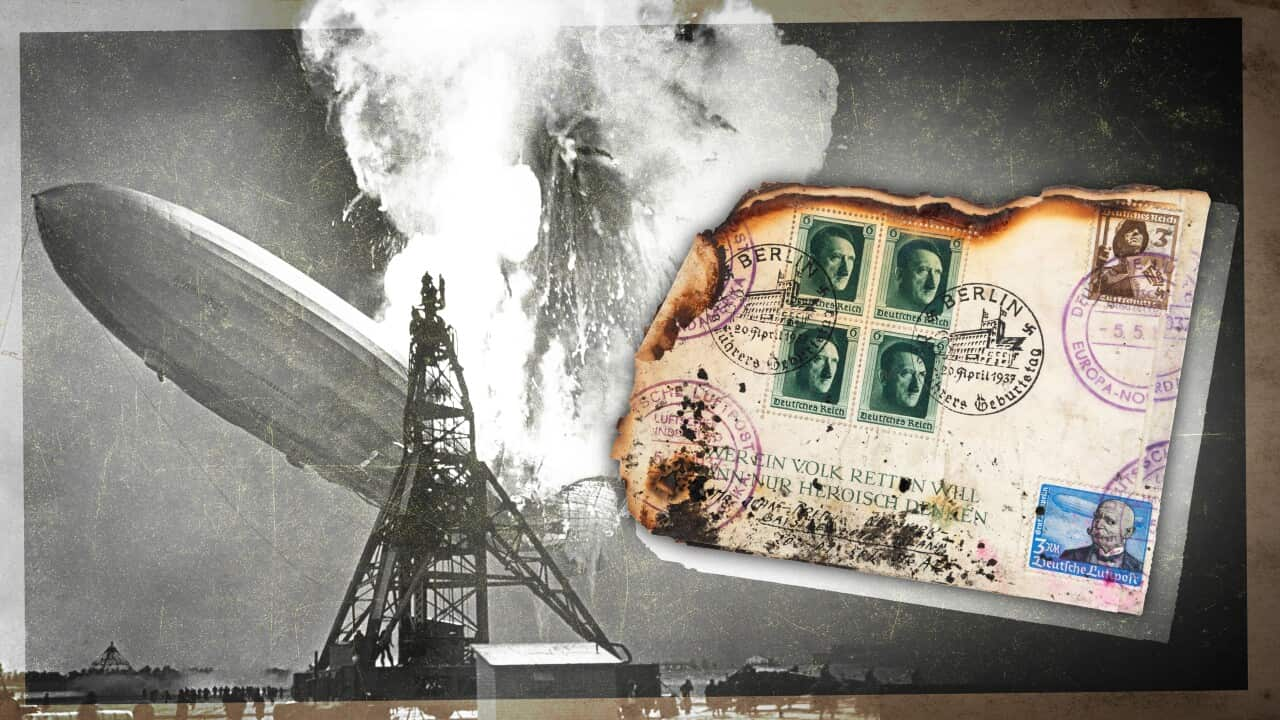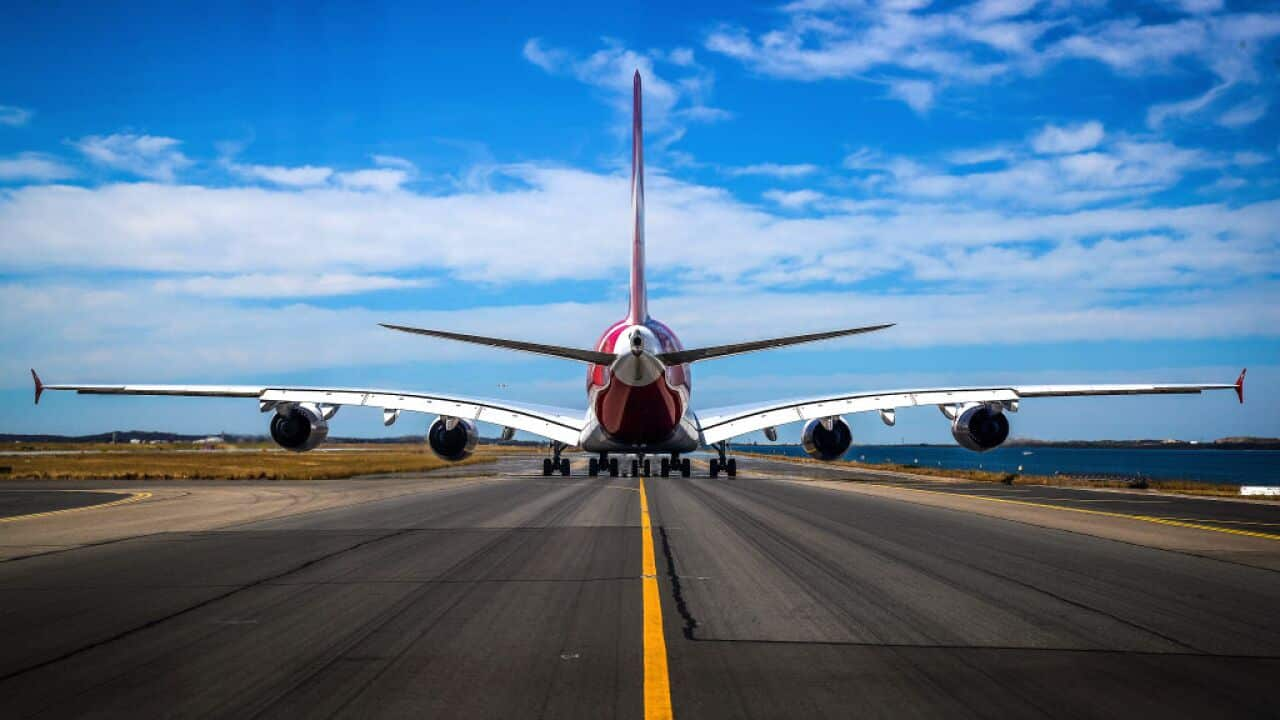Key Points
- A collection of mail items sent via airship is up for auction in Australia.
- The most valuable of the items is a burnt envelope that was on board the Hindenburg airship when disaster struck.
- The lot, made up of more than 100 items, is expected to fetch tens of thousands of dollars.
A charred envelope that survived the Hindenburg airship disaster in 1937 is to be auctioned in Australia.
The envelope is being auctioned as part of a collection of mail carried by airship between 1924 and 1937.
The auctioneer responsible for the sale expects the bundle of more than 100 items to sell for more than $30,000 with the piece from the Hindenburg disaster alone worth about $20,000.
Airship transport
Airships were considered a luxurious way to cross the Atlantic in the 1920s and 1930s.

The Hindenburg airship transported passengers between Germany and the US. Source: Getty / Fox Photos/
Another famous airship was the LZ 127 Graf Zeppelin, which made 590 transatlantic flights from 1928 to 1937.
"Travelling by air was obviously more expensive than going by sea, unless you went in a first-class cabin," auctioneer Charles Leski told SBS News.
"Going by air was the fastest, going by airship — especially going by Zeppelin — was the most luxurious, if you look at photos of the cabins and the small number of very wealthy people who were able to travel that way, they're all dressed in evening-wear, everybody had a cabin with a bed and sat down at a table for a meal.
"There was a grand piano, there was a smoking room or library, it was really a very elegant way to spend two or three nights floating across the Atlantic."
Airships also carried mail.
Leski said while more expensive than other forms of postage, about 100,000 pieces of mail were transported between Europe and America each year via airship while they were operating commercially.
Mail sent this way was easily identifiable by the specific stamps that were used, which always depicted an airship.
The Hindenburg was carrying 17,600 pieces of mail on the day it crashed.
The Hindenburg explosion
Leski said what happened on 6 May 1937 effectively scuttled the airship as a commercial carrier.
As the Hindenburg, with 97 people on board — 36 passengers and 61 crew — made its final approach towards a New Jersey air station to be moored above the ground with landing ropes, it caught fire.
While powered by diesel, helium had been used to provide buoyancy in the air, however a shortage of the gas meant highly flammable hydrogen gas was often used instead.

The Hindenburg airship exploded upon its arrival to New Jersey, after its trip from Germany on 6 May 1937. Source: Getty / New York Daily News Archive/NY Daily News
Thirty-five people (13 passengers and 22 crew) died in the disaster, which received worldwide coverage.
It's thought to have contributed to a loss of confidence in airship travel and by the late 1930s commercial aeroplane travel became favoured, also due to improvements in speed, reliability and cost.
While the exact cause of the incident has never been conclusively identified and some claimed the aircraft had been sabotaged, it's most likely leaking hydrogen was ignited by static electricity.
A time stamp of 1937
There is no letter inside the piece of envelope up for auction, however the address on it suggests it was destined for Long Island, New York.
A stamp on the envelope shows it was posted from Berlin on 20 April 1937 and it was postmarked again while on the Hindenburg in May.

The burnt envelope with other items in the same lot it is being auctioned off with. Source: Supplied / Leski Auctions
Another of the stamps shows Germany's former president, Field Marshal Paul von Hindenburg, who the airship was named after. Behind him is the image of an airship.
Significance of burnt envelope
Leski said while he's dealt with a lot of mail that had flown on the Hindenburg, this was the first piece he'd handled that had flown on the airship's final flight that crashed.
"And to the best of my knowledge, and I've been doing this for more than 50 years, this is the first time an envelope from the Hindenburg crash has been offered in Australia," he said.
Leski said of the more than 17,000 pieces of mail on the Hindenburg, about 360 were retrieved from authorities at the site.
"In the years since 1937, 150 odd have been tracked, so it's possible that people getting a charred piece of mail from the Hindenburg just threw it away, or that it's just been lost or misplaced," he said.
Airships may have never provided commercial travel to Australia, but this particular envelope has now made its way to Australia and is scheduled to be auctioned in Melbourne on 17 September.
Leski said the piece was currently owned by an overseas collector whose son is based in Australia.











